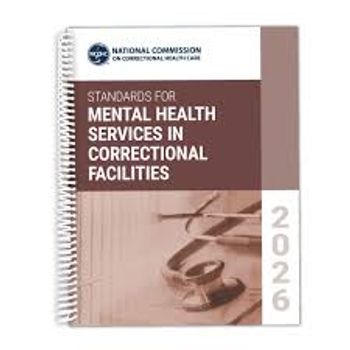Demystification of the psychiatric experience through transparency with documentation can replace anxiety with empowerment. The trend toward transparent documentation has potential for many benefits, yet it remains a provocative concept for the field of psychiatry. The OpenNotes initiative that began with sharing primary care notes online and in real time with patients has proved to be a valuable diagnostic and effective treatment tool. Taking away the mystery of what has been written down gives patients the potential to focus on wellness instead of worry.
The medical record is information that belongs to the patient, but more often than not, it is treated like a classified document. The advent of information technology changed the face of 21st-century medicine in [[{"type":"media","view_mode":"media_crop","fid":"32191","attributes":{"alt":"Transparent Notes in Psychiatry","class":"media-image media-image-right","id":"media_crop_1048157798040","media_crop_h":"0","media_crop_image_style":"-1","media_crop_instance":"3406","media_crop_rotate":"0","media_crop_scale_h":"0","media_crop_scale_w":"0","media_crop_w":"0","media_crop_x":"0","media_crop_y":"0","style":"width: 150px; height: 163px; float: right;","title":"Shutterstock.com","typeof":"foaf:Image"}}]]dramatic ways. Electronic medical records are changing how clinicians record, retrieve, and exchange medical information about patients. On the legal front, the 1996 passage of the federal Health Insurance Portability and Accountability Act assured patients the right to (1) review their medical records and (2) request corrections and additions be made to the record. Since then, the medical chart is no longer the sole purview of clinicians. All patients own their medical records, although they rarely have easy access to notes written about them by doctors and others.
Online resource centers and support services are changing how patients learn about their diseases and treatments. Transparency in medical care is emerging as a new standard. Physicians are recently coming to realize the benefits enjoyed by patients and the health care system when the information in a patient’s chart is made available in real time. Success in medical record transparency is already well documented in the primary care setting, and it is only a matter of time before such evolving standards pervade psychiatric practice.
In these evolving times, it is important for psychiatrists to recognize the potential consequences and advantages of sharing their progress notes with patients. The challenge for today’s physicians is crafting notes that not only serve medicolegal, insurance, and quality monitoring documentation standards but that also are (1) optimally useful to clinicians in the care of patients and (2) useful, or at least not harmful, to patients who read their chart.
This article reviews the marked successes of transparent notes in primary care and provides an analysis of the potential problems that psychiatry will face as the field evolves as well as of the potential benefits that may be gained.1
OpenNotes
A large US research collaboration called OpenNotes has proved that increased transparency of notes and democratization of health care transforms the patient-clinician relationship.2 Patients specifically expressed considerable enthusiasm and few fears about reading their notes, anticipating both improved understanding and more involvement in care.3,4 Sharing visit notes has broad implications for quality of care, privacy, and shared accountability.5
Historic lack of transparency has often been harmful to patients and families, who far too often are not informed of the diagnoses in their charts. Patients lacking easy access to their clinical notes is a huge problem, since it seriously cripples (sometimes fatally) their abilities to participate in their care and otherwise ensure that their medical care is person-centered and a good fit for their values.
On a practical level, OpenNotes provides patients the opportunity, for the first time, to have access to their chart notes online. This means that they will be able to read what their physician has recorded, such as physical examination findings, interpretation of findings, conclusions about a current condition, thoughts about future evaluation of the patient’s condition, and prognosis for the patient.
Psychiatric patients often find something mystifying about their encounter with a psychiatrist. Sharing their most intimate thoughts, fears, and behaviors with their doctor can leave patients feeling exposed and vulnerable. Wondering what their provider is thinking-and writing-about them can be an anxiety-provoking experience.
Still, there are many things to consider when expanding this new standard to psychiatric patients. Controversy sparks around difficulty related to the sensitivity of the note content. It has been predicted, however, that online outpatient notes are not likely to cause major concerns for patients who read them.6
Some caveats
Feelings of uncertainty often coalesce with confusion as patients attempt to understand their multiaxial diagnosis and treatment plan. Patients who have been hospitalized or placed under guardianship find themselves grappling with new terminology and the meaning of their legal status.
Transparency in psychiatry can be good, but it also has the potential to worry patients, muddle the physician-patient relationship, and create more work for an already overburdened workforce.
Sensitive topics that the psychiatrist might document are, for example, the diagnosis, commentary on substance abuse, or concerns about managing safely while at home. These findings could be upsetting to some patients. Others may experience feelings that threaten the physician-patient bond. Patients take a risk when reading notes intended for a medical audience.
Of course, transparency could come at a price to practitioners, at least in the short term. Already busy physicians might start receiving calls or e-mails from patients seeking clarification of or changes to their chart. Patients may misunderstand what is written and then draw inaccurate conclusions about their condition, which could lead to fear, guilt, anger, depression, confusion, frustration, or hopelessness-the very things we are trying to treat or prevent.
Things to consider
- Psychiatric patients often find something mystifying about their encounter with a psychiatrist
- Sharing their most intimate thoughts, fears, and behaviors with their doctor can leave patients feeling exposed and vulnerable
- Wondering what their provider is thinking-and writing-about them can be an anxiety-provoking experience
- Psychotherapy studies show that personal qualities such as warmth, openness, interest, and flexibility contribute most to good therapeutic alliances and treatment success
There is also the potential for patients to misunderstand a term or abbreviation and feel angry at a perceived insult. Patients reading a note online may learn upsetting news on their own, without the benefit of their physician or nurse to offer a healing context to help them absorb and process the news. On the other hand, clinicians may refrain from recording useful information for fear of misinterpretation.
Transparent notes through good documentation can also be used by psychiatrists to enhance the physician-patient relationship. Following reasonable guidelines will make clinicians more confident in sharing their notes with patients and will help instill a sense of trust and confidence from the patient’s perspective.
Practical considerations
The content of the medical chart and the mechanism style of its delivery to the patient will depend on individual circumstances, diagnosis, and patient risk for decompensation. Determination of what information to share with each patient will depend on the individual’s diagnosis and treatment plan. Objective findings, such as laboratory or imaging results, can be readily shown to patients. It is also advised that patients be told of their diagnosis as it is formulated by the psychiatrist. Pertinent details from the mental status examination, including abnormalities and details that reinforce the patient’s strengths or signs of symptom improvement, can be very useful to patients.
Psychotherapy studies show that what contributes most to good therapeutic alliances and treatment success is not knowledge of psychological principles, but personal qualities such as warmth, openness, interest, and flexibility.7 Sharing progress notes in real time with psychiatric patients should be done in a manner similar to that of starting a new medication-sensitively and slowly. Patients must be given the option to hear or read their chart details before they are thrust upon them. If a patient chooses to see his or her record, the physician should take great care in delivering the information deemed to be helpful to that particular patient. Patients should later be given an opportunity to reflect with the physician about their experience reading their chart. Opportunities in psychiatry note transparency include increasing avoidance of errors, reinforcing the diagnosis and treatment proposal, improving patient insight and acceptance, and dispelling unfounded worries about what a physician is thinking.
Conclusion
Progress notes must convey that the psychiatrist provided quality care and respected the patient’s condition and wishes. All necessary information should be noted with the exclusion of extraneous details. Subjective symptom reporting by the patient must be charted along with the absence of pertinent symptoms. If notes are handwritten, they must be legible and lack abbreviations and pejorative language.8
Sharing elements of a properly documented medical record in real time with patients has the potential to contribute positively to psychiatric patient progress and outcomes. Physicians must first be careful to consistently document notes that are comprehensive, concise, and thoughtful.
Disclosures:
Dr Farrell is Forensic Psychiatrist at Beth Israel Deaconess Medical Center and Instructor at Harvard Medical School, Boston. She is the author of Forensic Psychiatry: Essential Board Review (CRC Press, Taylor & Francis Group, 2015). She reports no conflicts of interest concerning the subject matter of this article.
References:
1. Atkinson I, Clay P. Access to nursing notes in psychiatry. Nurs Stand. 1993;7:36-39.
2. Delbanco T, Walker J, Darer JD, et al. Open notes: doctors and patients signing on. Ann Intern Med. 2010;153:121-125.
3. Walker J, Leveille SG, Ngo L, et al. Inviting patients to read their doctors’ notes: patients and doctors look ahead: patient and physician surveys [published correction appears in Ann Intern Med. 2012;157:80]. Ann Intern Med. 2011;155:811-819.
4. Nardone DA. Open notes: sharing physician notes with patients. Ann Intern Med. 2010;153:690.
5. Simon SR, Evans JS, Benjamin A, et al. Patients’ attitudes toward electronic health information exchange: qualitative study. J Med Internet Res. 2009;
11:e30.
6. Kung S, Lapid MI, Swintak CC, et al. Survey of sensitive information written in patient notes by psychiatry trainees. Acad Psychiatry. 2013;37:31-34.
7. Ackerman SJ, Hilsenroth MJ. A review of therapist characteristics and techniques positively impacting the therapeutic alliance. Clin Psychol Rev. 2003;
23:1-33.
8. Roth L. Progress notes: 10 do’s and don’ts. Curr Psychiatry. 2005;4:63-66.


















